You just never know when an important piece of communications history will show up to brighten your afternoon. Such was the case when my wife, father-in-law, and I recently visited the Mohawk Historical Society in Sycamore, Ohio, a village of 860 people in Wyandot County, about 60 miles southeast of Toledo.
This wonderful museum is jam-packed with local history: framed newspaper clippings of area sports triumphs; a meticulously scaled-down replica of a carousel; vintage household appliances; photos of small-town life; a case devoted to actor, comedian, and regular on the original Hollywood Squares, Charley Weaver (real name: Clifford Charles Arquette), who was born in Toledo and had ties to Wyandot County; and a framed print, signed by singer/songwriter Gordon Lightfoot, of the ill-fated Edmund Fitzgerald in honor of Ralph G. Walton, who was born near Sycamore and died along with 28 others when the freighter sunk in the frigid waters of Lake Superior on November 10, 1975. (Listen to Lightfoot’s lilting maritime masterpiece, “The Wreck of the Edmund Fitzgerald,” here.
What really caught my eye was a straight key and Vibroplex Bug used on the AC&Y (Akron, Canton, and Youngstown) railroad. Opened in 1912 with tracks that ran between Akron and Mogadore to serve the area’s burgeoning rubber industry, the AC&Y would eventually include depots in Sycamore, Delphos, and other Ohio towns which saw steam- and diesel-powered trains transport tons of freight (and passengers on a limited basis) over decades of service. Tracks between Akron and Carey, Ohio—now part of the Wheeling and Lake Erie Railroad—are still in operation. Ironically, the AC&Y never extended to Canton and Youngstown as was originally planned, but the name remained until the company was merged with a larger operation in the 1980s.
Morse Code and the Railroad
Railroads like the AC&Y depended on Morse code stations and skilled operators to provide vital communications to make sure everything ran smoothly. In the 1920s, there were 78,000 members of the Order of Railroad Telegraphers—a union which promoted the interests of operators in the U.S., Canada, and Mexico.
First patented in 1904, “Bug” keys, so called because of Vibroplex’s original electrified-insect logo, were the heart of many of these stations, allowing for significantly higher code speeds than could be achieved with a straight key. Below are photos of the Morse telegraph sounder, straight key, and Bug on display in the museum (also a good reminder to upgrade your worn cables!):
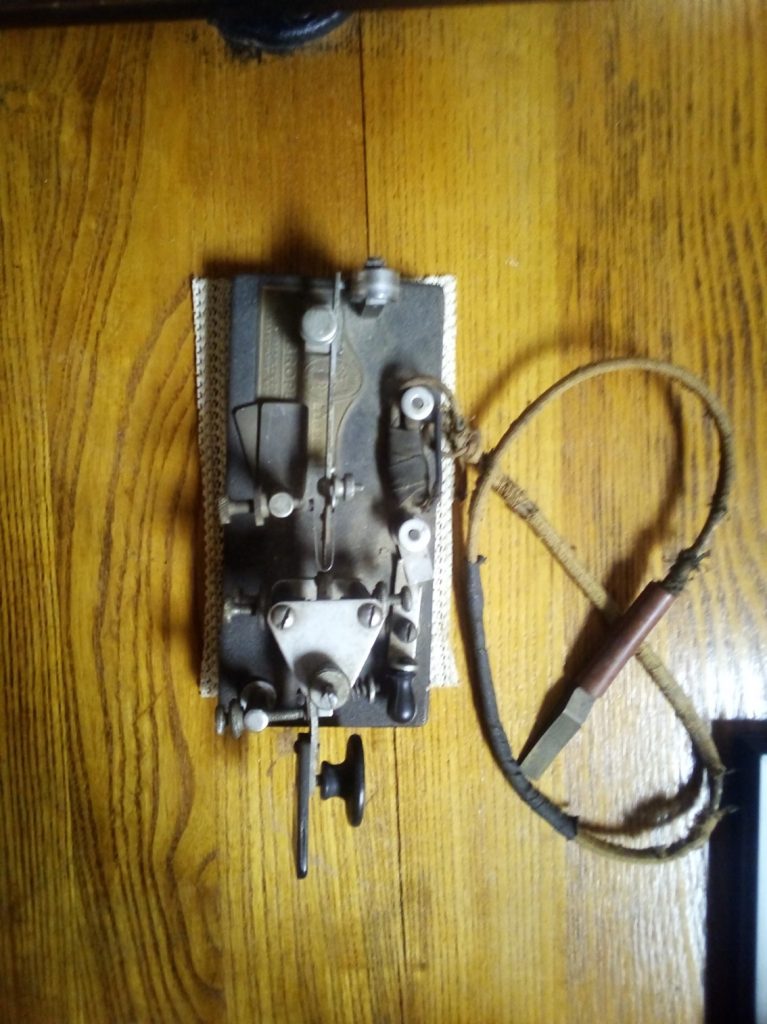
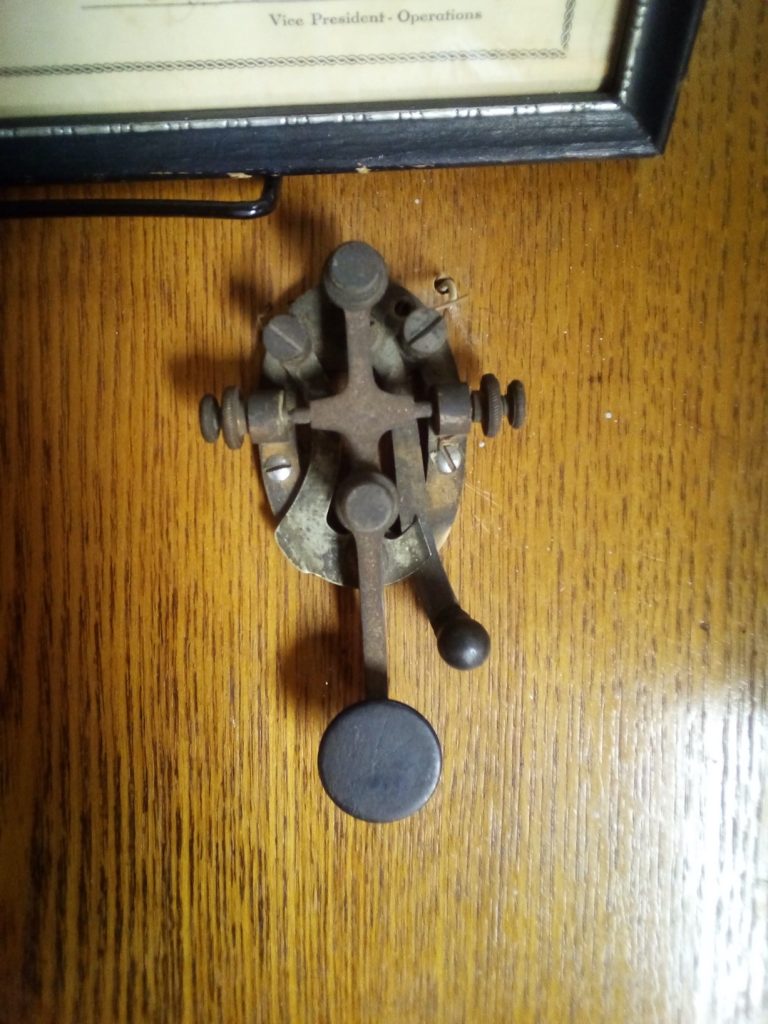
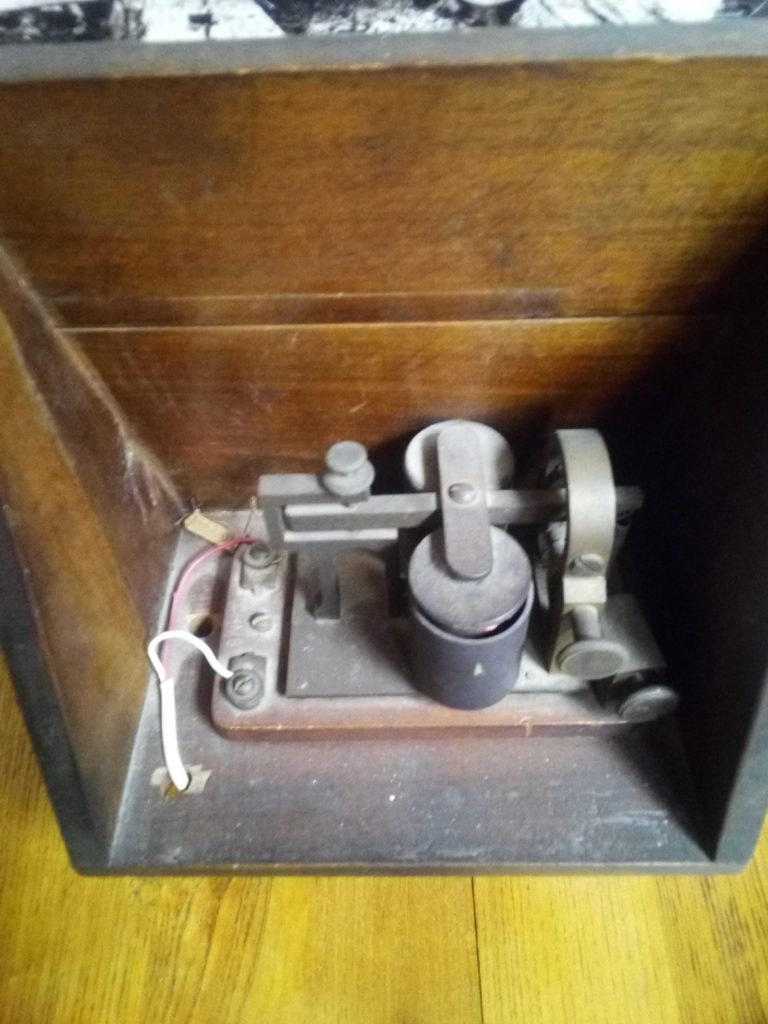
Virtually extinct American Morse code, also called “landline” or Railroad Morse, refers to the original code developed in the mid-1840s by Samuel Morse and Alfred Vail that later morphed into more widely accepted
International Morse code. While the rest of the world adopted the international version, many American companies resisted the change, even after the 1912 Radiotelegraphic Convention in London established the International version as the worldwide standard. U.S. landline telegraph companies persisted in using dot-heavy American Morse code due to the faster speed at which it could be sent. Hams, the military, and ship operators favored the international code, though it has been noted that many ship telegraphers learned both Morse versions.
Jim Thompson, a former railroad telegrapher on the Frisco system (St. Louis to San Francisco), wrote in OzarksWatch, a publication of the Center for Ozarks Studies:
“Telegraphy, like most technologies, underwent changes during its life. One of the greatest was in the telegraph key itself. The key was adequate for brief exchanges of information. Its sound also captured the imagination of news people and movie makers. But it was too slow for young, energetic telegraphers who had many long reports to send. They needed speed. The Vibroplex ‘Bug’ machine was built for that. One could move more telegraphic traffic in an hour with a ‘bug’ than one could in a day with a key.”
He concluded the article: “The complimentary close following a transaction on the wire was ’73,’ a symbol of fraternity. In 1967 a final ’73’ was transmitted across the Frisco system, and with that, telegraphy was discontinued on the Frisco, 123 years after Samuel Morse’s 1844 message (What hath God wrought?). Through the 1950s and 1960s, technological innovations in radio, telephone, and computers combined to make Morse’s message seem overly dramatic. But to those of us who were the eyes and ears of the railroads, we were, like Mercury, messengers for thundering giants.”
The Bug Lives On
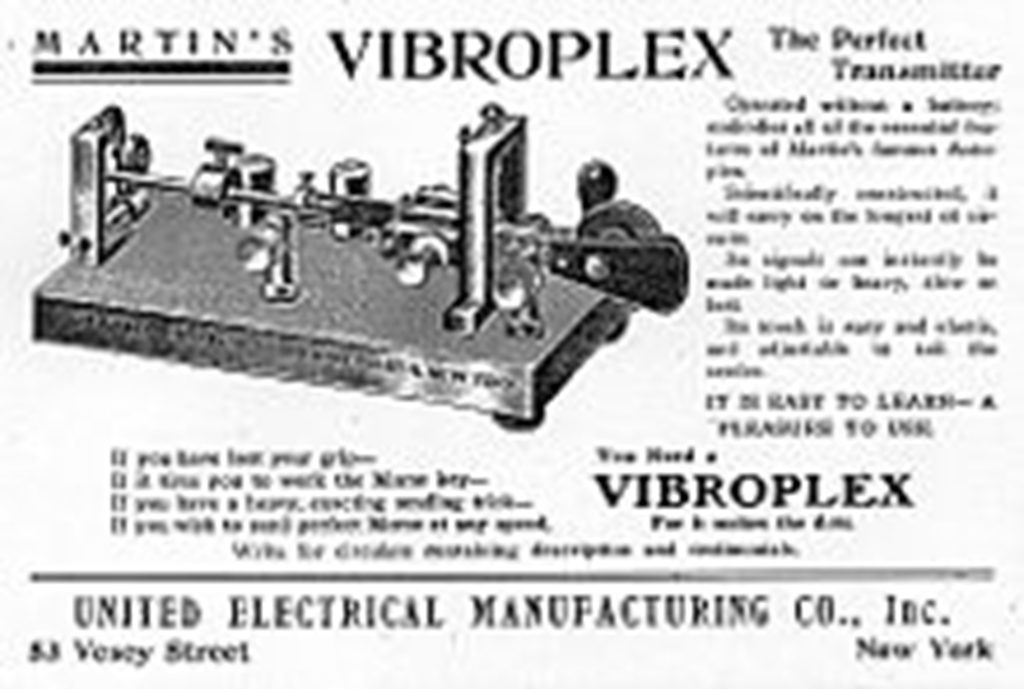
Vibroplex, amateur radio’s oldest continuously operating business, was founded in 1905 by telegrapher Horace Greeley Martin, who revolutionized the telegraph industry with his invention of the semi-automatic Bug key. Martin’s design has stood the test of time. In fact, Vibroplex employs tools and dies similar to those used by Martin in manufacturing Original Bug keys. The Bug is beloved by today’s operators who take advantage of the device’s capacity for increased sending speed while reveling in owning a finely crafted piece of communications history that links modern Morse fans with the dedicated operators whose livelihoods depended on these precision instruments.
Want to experience what it was like to be a railroad telegrapher on the AC&Y? Vibroplex makes it possible with these options:
- Original Standard Bug, featuring black base and chrome hardware
- Original Deluxe Bug, featuring chrome base and hardware
- Original Bug with Chrome/Gold Base
Original Bug with All Gold Base
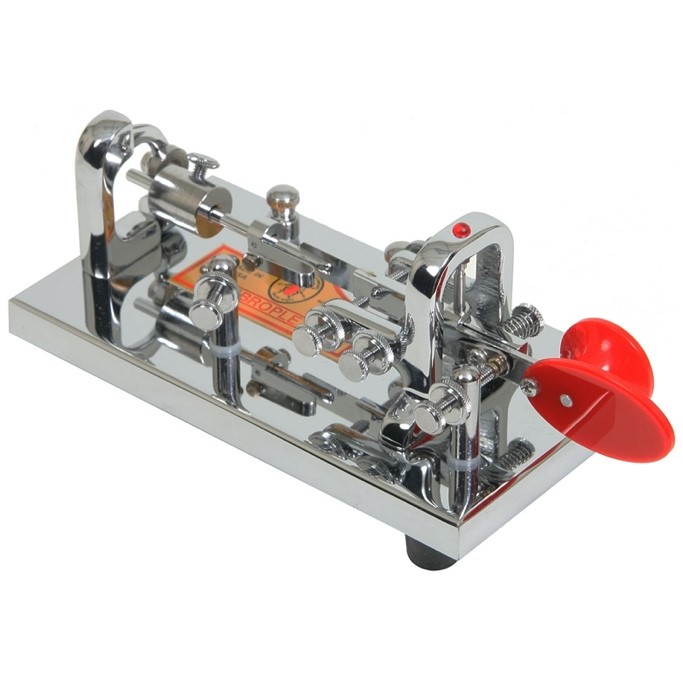
Also available are Vibroplex Blue Racer 2000 Semi-Automatic Bug Keys, which use the same frame and parts as the Original Bug.
Due to varying rig requirements, keying cables for Vibroplex Bugs are sold separately.
What do hams say about the Original Vibroplex Bug?
Five Stars: “This was a bucket list purchase for me. It is beautiful and extremely well made. I can’t wait to get my code speed back so I can use it on the air.”
Five Stars: “I have always wanted one of these; finally decided to get it. It is a beautiful looking product, flawless in appearance. Works perfectly. I have used both a straight key and electronic keyers in the past. I prefer this over all the rest.”
Five Stars: “This is the first bug I’ve ever used, and it is probably the last bug I will ever buy. It is well made, solid on the desk, and feels very precise when in use…I belong to a straight key club, and I need speeds down below 20 WPM, so I bought the speed kit. The kit makes it easy to slow the speed to beginner ranges on the fly, then kick it back up for the next QSO. Highly recommended.”
Note: The Vibroplex Vari-Speed Kit allows you to infinitely adjust your bug’s speed to as low as 1o-12 WPM and slower. It fits all of the Original Vibroplex Bugs and Blue Racer Bugs.
Vibroplex—based in Knoxville, Tennessee—also manufactures an excellent selection of straight keys, iambic paddles, code practice oscillator kits, dust covers, cable assemblies, and connectors under the Bencher and Vibroplex brands; owns INRAD (microphones and headsets); manufactures Par End-Fedz antennas; and is a distributor for GHD and Hi-Mound keys, mAT-TUNER automatic antenna tuners, and other amateur radio products in the U.S. and Canada. If you’re in the market for your first Morse code key, be sure to read this OnAllBands article from blogger Ward Silver, N0AX, “Choosing a CW Key or Paddle: Understanding What’s Available.”

